Reflecting the horology Maison’s longstanding links with Japan, Vacheron Constantin is honouring artistic crafts at the Homo Faber Exhibition in Venice, from 10 April through to 1 May 2022. Two watches – Les Cabinotiers Minute repeater ultra-thin God of Thunder and Les Cabinotiers Minute repeater ultra-thin God of Wind – have been created in tribute to Japanese mythology, craftsmanship and the watchmaking expertise of Vacheron Constantin.
Home Faber International Exhibition
Vacheron Constantin showcases its new timepieces in Venice with its master artisans: a watchmaker, an enameller, an engraver and a gem setter. Art workshops from the Louvre Museum (a brand partner since 2019) are active on-site, as is the watchmaking brand, displaying their art on a gold leaf-gilded quadriptych, with dial motifs inspired by the watches; both the Louvre and Vacheron Constantin share a passion for transmitting and preserving artisanal skills and expertise.
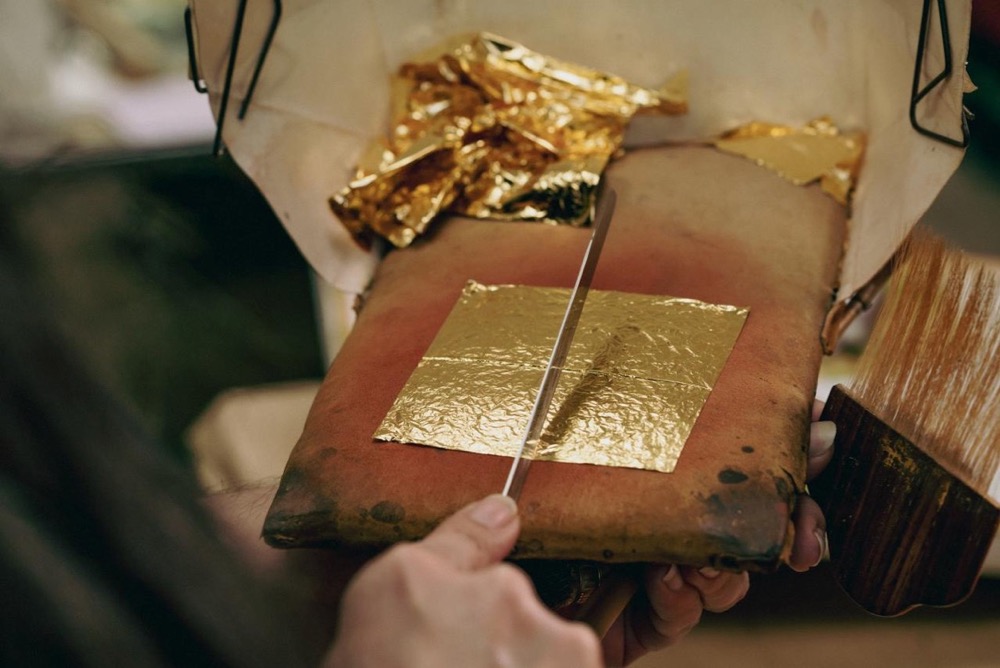
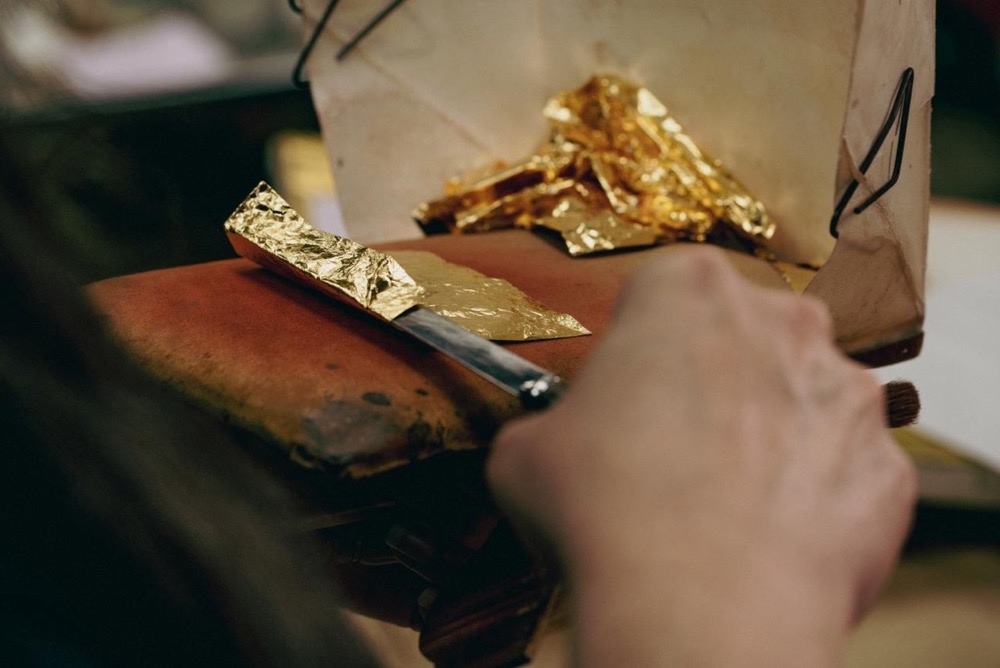
Vacheron Constantin has taken its place alongside perfumers, watchmakers, jewellers, kimono makers and bootmakers in a pavilion that’s dedicated to the world of luxury, under the title “Details: Genealogies of Ornament”. The event is a cultural immersion in the world of artistic crafts, divided into 15 exhibition spaces. Some of the timepieces in Vacheron Constantin’s private collection (featuring Japanese-inspired decorations and ornamentation) are displayed at Homo Faber.
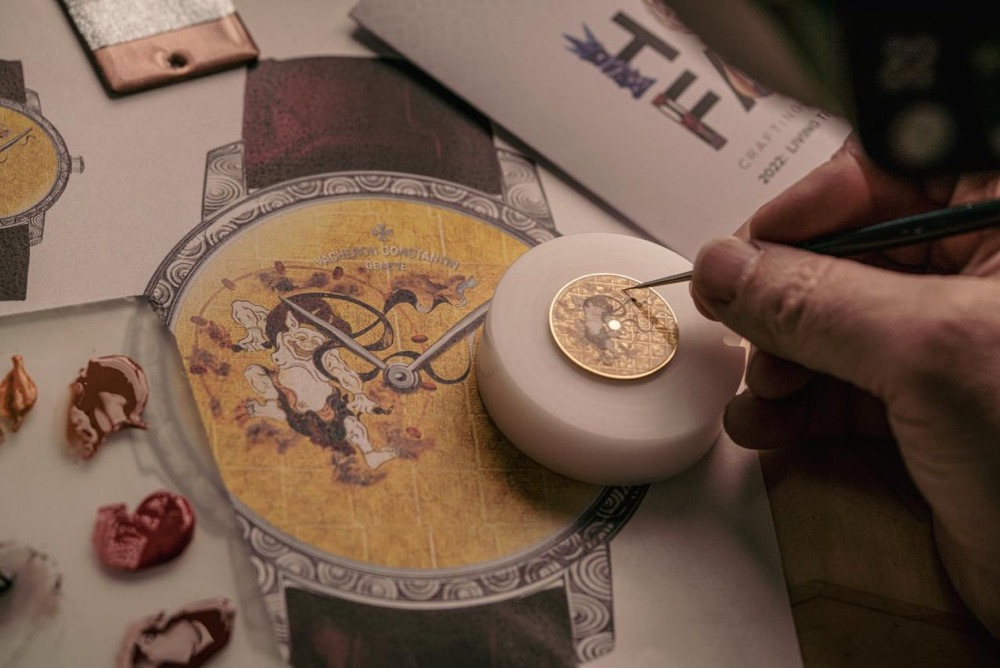
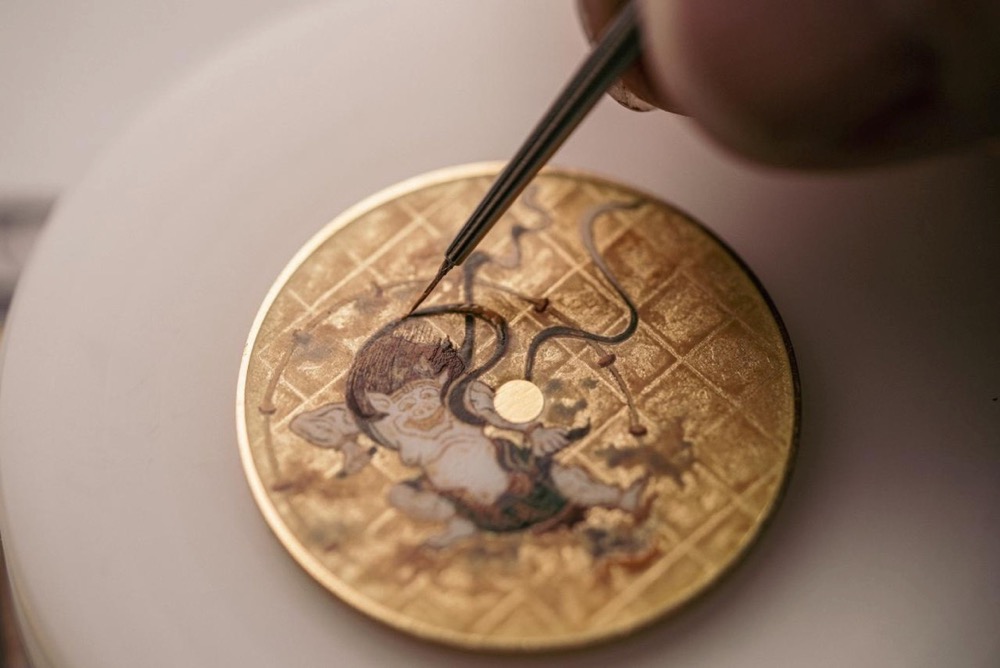
As the Michelangelo Foundation which is curating the event explains: “Homo Faber is an expression first coined during the Renaissance and it celebrates the infinite creativity of human beings. This exhibition will provide a panoramic view of fine craftsmanship, with the sole guiding principle being what humankind can do better than machines.”
Masterpieces of engraving
Miniature enamels depict the wind god Fujin and the thunder god Raijin. In ink and colour on a gold background, the pair appear on two-panel screens made at the beginning of the period and kept in the National Museum in Kyoto. One of the great figures of Japanese mythology and one of the oldest deities of Shintoism, Raijin floats in the sky, dancing with his drumsticks in his hand; while Fujin jumps rope with his windbag. The dials refer to the painting which was crafted by the 16th-century Japanese artist S?tatsu, considered a national treasure.
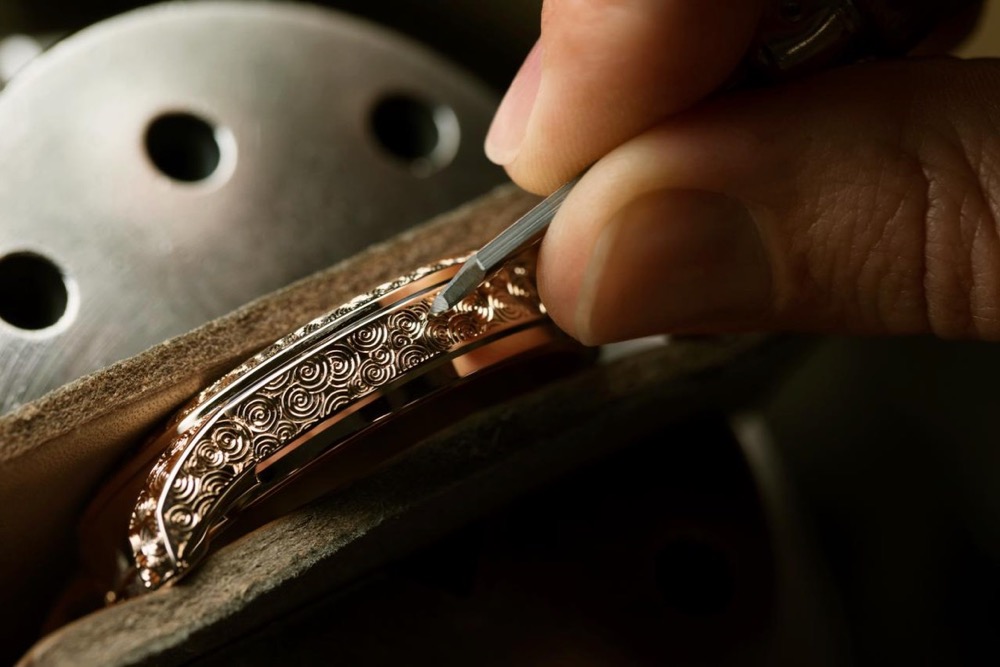
White gold cases display fine line intaglio-type engraving on the bezel, middle and lugs, alongside minute repeater slide pieces set with precious stones. Driven by in-house Calibre 1731 (a movement well known to watch lovers and collectors), each has an ultra-thin minute repeater movement measuring just 3.90 mm thick and a 65-hour power reserve. The Les Cabinotiers Thunder God timepiece sports a burgundy alligator leather strap secured by an engraved white gold folding clasp; while the Les Cabinotiers Wind God model features a green alligator leather strap, also with an engraved white gold folding clasp.
A hundred hours of meticulous craftsmanship
Gongs are not only linked to the case middle to amplify the sound but also superimposed rather than aligned side by side, to create a perfect strike. The case, measuring 41 mm by 8.44 mm enables excellent air circulation between the mechanism and the case, thus contributing to optimal propagation of the notes — a gasket-free construction ensures the interaction of metal on metal.
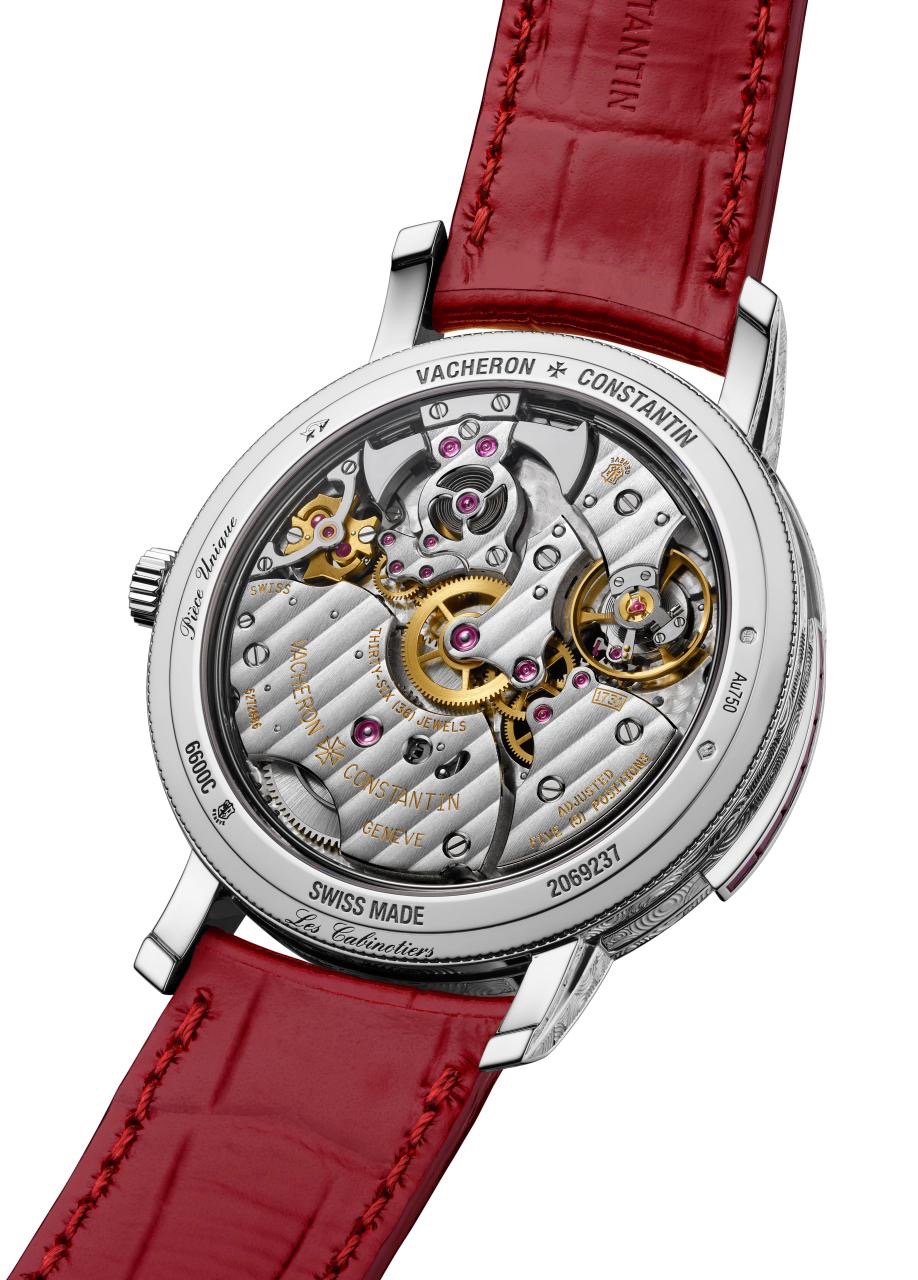
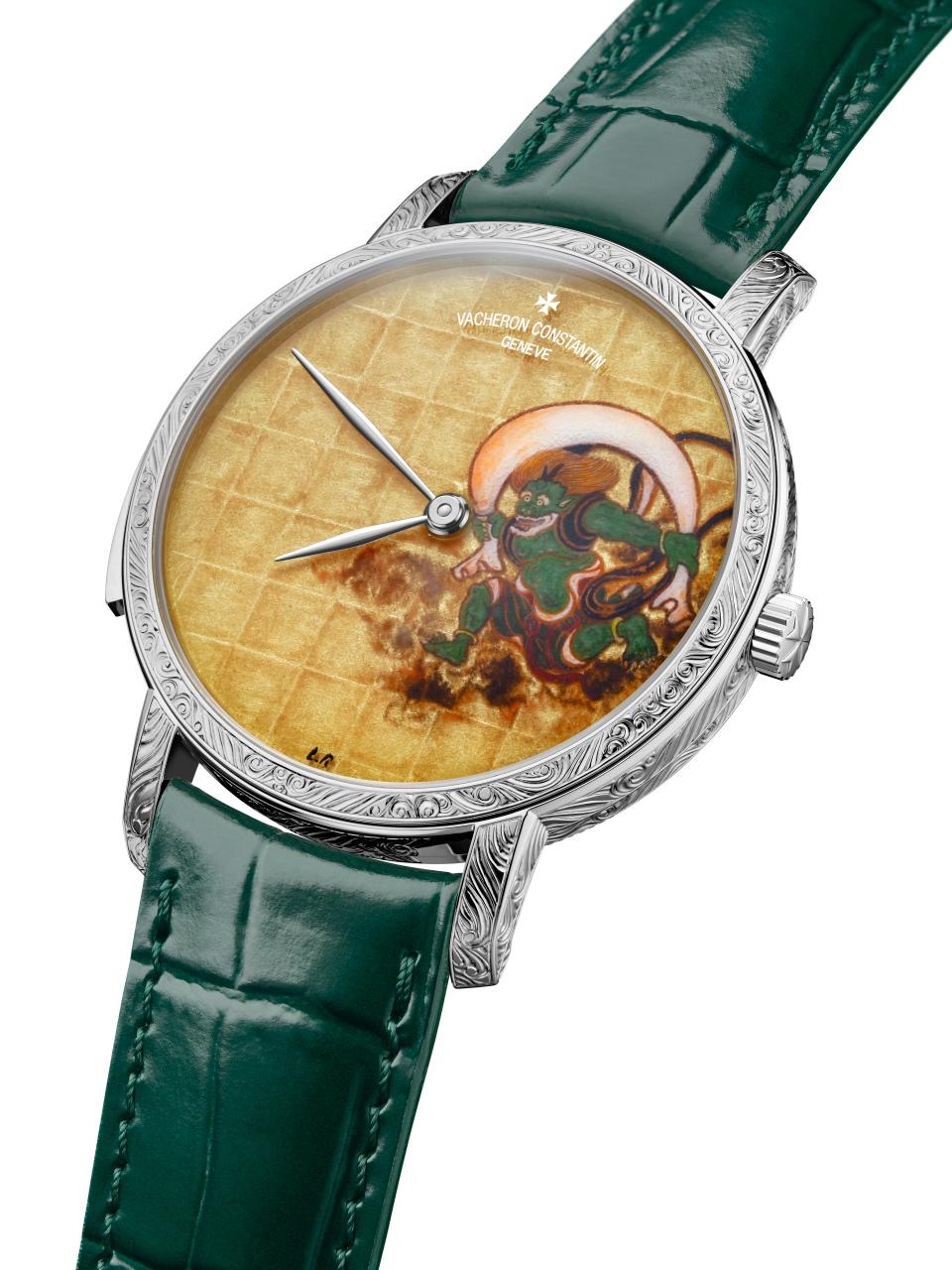
A dial of 18K yellow gold features intaglio-type fine line engraving to reproduce an irregular chequered pattern of matt and shiny surfaces, thus creating the illusion of gold leaf decoration. A layer of transparent flux fired in the kiln is then applied to protect this base, ready for miniature enamel painting — between six and seven firings were necessary to stabilise the colours of Fujin and Raijin on their clouds. Then a layer of overglazing flux, given a final polish using the lapping technique, concludes the process.
The Raijin watch is engraved with volutes representing waves of thunder, while the minute repeater’s lug is embedded with six baguette-cut rubies to symbolise the power and energy of lightning and the slide piece is set with six baguette-cut tsavorites to symbolise air currents.
The relationship between Vacheron Constantin and Japan
In 1862, Charles-César Vacheron was sent to Japan by the State Council of the Republic and Canton of Geneva, as a response to the diplomatic and commercial agreement signed between Switzerland and Japan in 1864. From here the link was born and following the opening of trade between Japan and the West in the second half of the 19th century, Vacheron Constantin became a must-see attraction for enlightened lovers of timepieces from the country.
Vacheron Constantin later honoured Japanese craftsmanship with the Métiers d’Art – La Symbolique des Laques watch series interpreted across a three-year period starting in 2010 and celebrating “maki-e”, the art of lacquer sprinkled with gold or silver powder.
The new watches – and a selection from Vacheron Constantin’s private collection – can be explored at the Homo Faber Exhibition in Venice, from 10 April through to 1 May.




